Nexus 6P review: Put your hands together for this two-handed phablet
Google and Huawei hone in on the ideal phablet at a discount

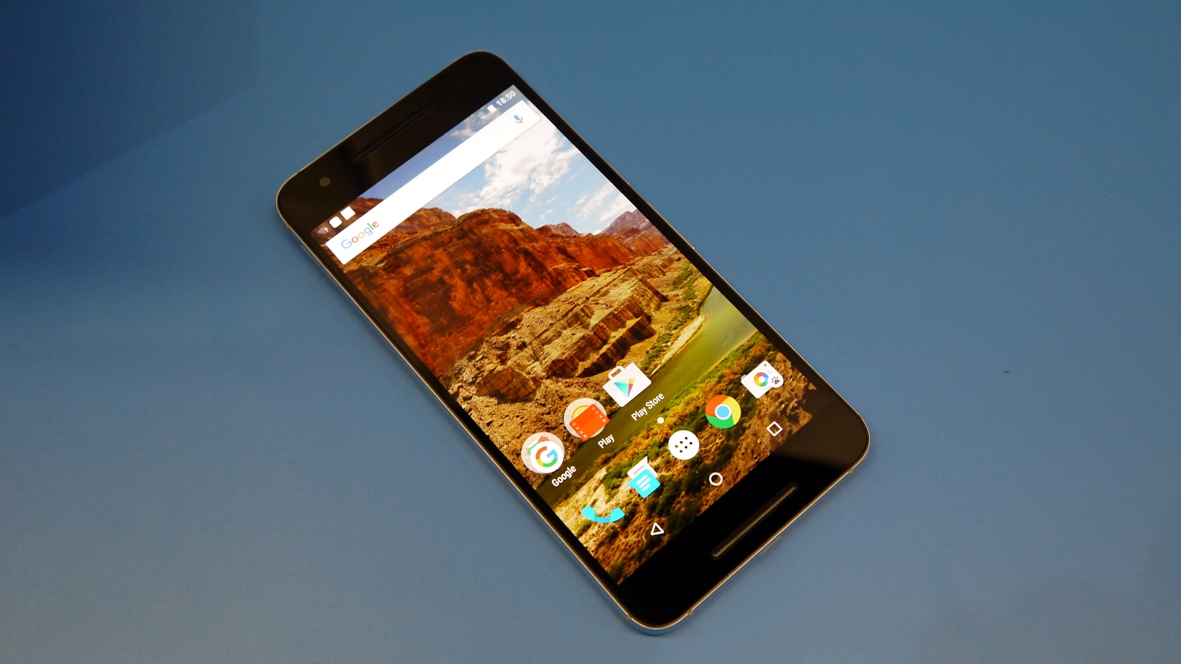
-
+
All metal design
-
+
Fingerprint scanner
-
+
Lovely display
-
-
Still pretty big
-
-
Questionable camera design
-
-
No wireless charging
Why you can trust T3
The Nexus 6P defines the Nexus series better than any of its predecessors: it's Google's first successful intersection between an affordable, yet premium smartphone.
That's exactly what Google and Huawei were driving for with this tall, but still palmable Android at £449. Its has a 5.7-inch AMOLED display and an all-metal design, and it's a steal next to last year's more expensive and less ambitious Nexus 6.
More importantly, it's a real challenge to this year's Samsung Galaxy S6 Edge+ and iPhone 6S Plus. Samsung and Apple have had an edge on design, but that's no longer the case here.
If you fancy more internal storage, Google also offers the Nexus 6P in 64GB and 128GB variants, which are priced at £499 and £579 respectively.
The Nexus 6P make few sacrifices for its bargain price that most people will find forgivable. After all, this is the best Nexus phone yet, even next to the newly launched Nexus 5X.
- Check out our Nexus 5X review
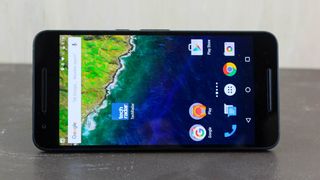
Design
This is a palm-stretching phablet by every measure, even if it's not as big as the Nexus 6. The dimensions are 159.4 x 77.8 x 7.3mm and 174g, so it's longer, but narrower, thinner and lighter.
That instantly made the Nexus 6P feel comfortable to hold in one hand. Yes, it's taller and still a bit weighty, forcing us to adjust our grip to reach that notifications pulldown at the top and home button at the bottom. But we could wrap our hand round this one.
We found the 6P was less prone to slipping from our clutches than the slick iPhone 6S Plus, which is also made of aluminium. The difference is that Apple went with smooth and rounded corners, while Huawei built this phone with a boxy frame.
It's not completely flat. There's a slight bulge in back that masks the camera and sensors made with glass. It's a bit ugly, but the trade-off is a much better Nexus camera in low light conditions.
There's also a plastic strip at the bottom to house antennas. It's hard to notice, as it matches the color choices of Aluminium (gray), Graphite (black) and Frost (white) and thankfully isn't the all-metal phone's Achilles heel. For some people, the letdown may be the fact that there's no wireless charging anymore.
Its fingerprint sensor, also on back, does take some getting used to. It's an odd place for a buttonless biometric ring, and takes finger bending to reach on the phablet. Luckily, we didn't smudge the off-center camera lens on the way to the sensor, as we did many times with the Nexus 5X.
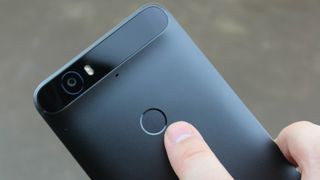
Features
Once we got used to the rear-mounted fingerprint sensor, we realized that it's almost flawless when trying to bypass the lockscreen or play with Android Pay.
In fact, it unlocks the Nexus 6P faster than the Apple's Touch ID sensor unlocks an iPhone 6S Plus and took just eight seconds to register each finger, not 24 seconds. It remains just as accurate, too.
As an added bonus we found that this “Nexus Imprint” sensor, as Google likes to call it, actually wakes and unlocks the phone at the same time when pressed. It's a two-in-one trick that requires zero button pressing.
We did find USB-C a little more tricky at times, despite the fact that I appreciate the reversible cable connection and faster charging times from the newfangled port.
The problem, like we experienced while owning the New MacBook, is that traveling becomes more complicated, as we have plenty of microUSB cables but only one USB-C cable.
It'd be hard to replace on the go if we ever lost it or the special charging block. Like an iPhone 4S owner looking for a 30-pin cable down the pub, no one is going to have one to borrow. These are the growing pains of next-generation charging that will ease with time.
The good news is that we found the Nexus 6P to charge more quickly. It took just 1 hour and 37 minutes to fully restore my battery to 100%. Data transfers still remains at normal speed, even though the new standard is supposed to double transfer rates to 10Gbps in the future.

Performance
The Nexus 6P has a powerful powerful Qualcomm Snapdragon 810 processor beneath its premium metal finish. It combines 2.0GHz quad-core and 1.55GHz quad-core chips.
This chip configuration, along with a Adreno 430 GPU, has been used in other phones, like the LG G Flex 2 and HTC One M9, but there's not as much slowdown or heat involved here.
Qualcomm's 64-bit, octa-core processor runs faster than the 808 chip that's found in the Nexus 5X, and it has more headroom with 3GB of RAM onboard instead of just 2GB.
Multitasking wasn't much of a problem, though it didn't perform as snappily as the Galaxy Note 5 in my tests. Samsung's Exynos chip is the champion of smartphones right now.
The Nexus 6P performance does benefit from one Google-exclusive feature: the Android Sensor Hub. It sidelines tasks like orientation and motion tracking without taxing the CPU.
The quick and sharp camera is another Nexus 6P highlight. We were able to snap photos with the 12.3MP rear camera sensor, taking in 1.55-micron pixels and excellent photo snaps.
It's the larger pixels that make the difference here. It translates into more light absorbed and better low light photography. This is the first Nexus camera with a stunning camera.
We only wish Google's straightforward camera app had all of the features and well-laid-out settings of rival default camera apps. Samsung's app has manual controls, RAW files and a YouTube Live partnerships. Apparently, no one at Google knows anyone at YouTube.
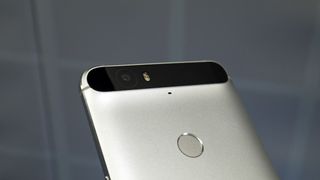
Usability
Android Marshmallow makes its debut on the Nexus 6P and the Nexus 5X, and it takes a while to fully realize the subtle changes since there are a bunch of behind-the-scenes tweaks. But they're important.
Doze Mode and App Standby essentially send the phone into a suspended state when not in use. Battery life lasts all day with heavy use thanks to a large 3,450mAh battery, but this two software tricks combined with the Android Sensor Hub extend that when the screen is off.
The volume rocker has returned Do Not Disturb to its rightful place. With Android Lollipop, Google made the lowest setting “vibrate” instead of “silence” via this physical button.
Google Now on Tap is a neat feature addition that scans your current screen for more details on what it thinks is the main subject. Reading an interview with Elon Musk? Holding down the home button brings up a short description and links to his official social media and Wikipedia pages.
Because this is a Nexus phone, it carries stock Android, so you won't have third-party altered menus or necessarily bundled software. To top of it off, it'll be first to receive Android 7.0 N whenever that arrives.
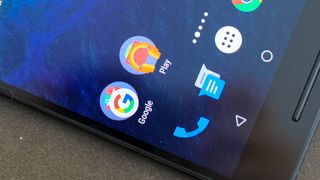
Verdict
The Nexus 6P is the best Google-designed smartphone, and it fully competes with the stellar Samsung Galaxy S6 Edge+ and LG G4, even before you factor in the significant price difference.
The processor is fast, the aluminum body feels solid in one hand while operating it with two and the fingerprint sensor and Android Marshmallow software just work.
The camera is a bit ugly, though it takes some pretty photos, and there's no wireless charging. Those are okay oversights with a price that starts at £449. You'll struggle to find a better Android for this amount of money.
Sign up to the T3 newsletter for smarter living straight to your inbox
Get all the latest news, reviews, deals and buying guides on gorgeous tech, home and active products from the T3 experts
-
 Forget Black Friday, F1 24 is completely free for a limited time
Forget Black Friday, F1 24 is completely free for a limited timeThis top racing game has a free weekend
By Max Freeman-Mills Published
-
 Devialet Astra is surely the most beautiful audio amp ever made
Devialet Astra is surely the most beautiful audio amp ever madeFrench brand Devialet is renowned for its stunning-looking audio products, but this is on another level
By Rik Henderson Published
-
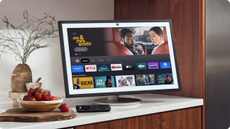 Amazon Echo Show range expands... literally – new 21-inch model and Echo Show 15 now available
Amazon Echo Show range expands... literally – new 21-inch model and Echo Show 15 now availableAmazon announces two new Echo Show models, including its biggest yet
By Rik Henderson Published